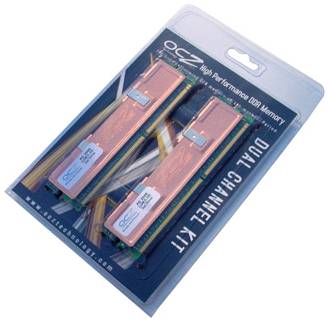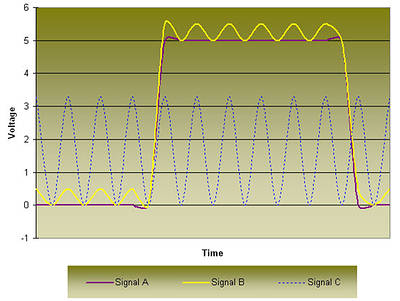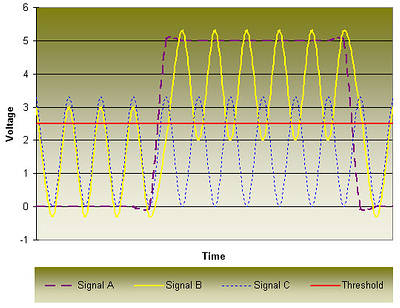OCZ Technology announces 1GB unbuffered DDR400 SDRAM DIMM modules made using ULN2 technology
OCZ Technology officially announced the new 1GB unbuffered PC3200 (OCZ4001024PF) modules that will be shipped in 2GB memory kits (OCZ4002048PFDC-K). Each module in such kit has overclockers traditional aluminium heatsinks and, according to the company, at 2.6V operates at 3-3-3-7 timings. From other similar products these modules differ by the ULN2 technology.

As usual OCZ tested kit modules in couples on ASUS P4C800 motherboard. I suppose that, having announced ULN2 technology in mid-February, the company will "repeatedly" release most of its products using this innovation.
Let me provide an explanation of ULN2 for those who haven´t found it yet. I guess the best will be the explanation from Eric Nelson published at TheTechZone (thanks Eric and Moto!).
"Noise and interference in electronic circuits are unintended fluctuations in the electrical signals present in these circuits caused by other signals in the neighborhood.

Figure 1a: Conceptual graph showing light influence of noise on a signal
As an example, the ideal signal should look like Signal A, in Figure 1a. However, in reality noise and interference cause the waveform to instead appear as Signal B in Figure 1a, due to the noise stemming from Signal C running on a neighboring line. Noise in electrical circuits is also commonly known as "crosstalk" — where seemingly unconnected elements within any given system can still influence, or "talk" to, each other.

Figure 1b: Conceptual graph showing heavy noise influence on a signal
The red "threshold" line in Figure 1b represents the crossover value (sometimes called the reference) that delineates whether a signal is a positive or negative value. As shown in the graph, excessive noise can change the signal integrity in that what is supposed to be a sustained positive signal can be interpreted as a rapid switching between positive and negative data and vice versa. Noise can cause a delay of the real signal and can also cause the signal to ramp up and terminate early. Both scenarios are equally bad, especially in parallel buses like the memory bus."
Therefore OCZ had to develop its own "shielded" PCB technology that reduces noises in the main signal and inductive disturbances and also improves signal routing for the maximum module clock speed.
Write a comment below. No registration needed!



